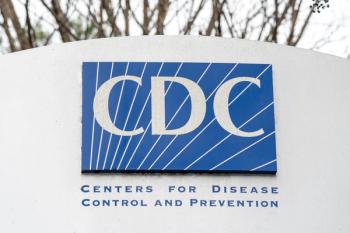
Eleven-year-old girl presents with weight loss, food restriction, and mood dysregulation
Can you diagnose this patient?
The Case
A previously healthy 11-year-old girl presented for an urgent mental health consultation with her pediatrician due to parental concerns about weight loss, food restriction, and mood dysregulation. What is the diagnosis?
History
The urgent appointment was scheduled due to parental concern about the change in the patient’s food intake and lack of engagement with the family over the last few weeks. In the months prior, the patient had been experiencing bullying at school after being placed in a classroom with additional academic assistance. She stopped participating in soccer due to fatigue and missed her period the month prior. During the interview, she denied avoiding food to lose weight and said she was just not interested in eating food due to a decrease in appetite. When questioned about the bullying she did become tearful, but denies anxiety, depression, and impulsivity. She admitted that sometimes she wants to die but has no intention and no plan. On review of systems, she reported waking up 1 to 2 times at night to urinate and using the bathroom every 2 hours at school. Her urination frequency was typical for her, and she said that she drinks a lot of water because she is thirsty. Vital signs taken indicated she had lost 10 pounds since her last physical exam 1 year ago. Her BMI was 16.8, blood pressure was 112/69 mmHg, heart rate was 86 bpm, and temperature was 98.2 °F. Besides emotional distress during the interview, that was nothing remarkable about the patient’s physical appearance.
Differential diagnosis
The differential diagnosis in this case represents the primary care perspective in treating a child who presents with mental health changes. While she is in the clinic due to symptoms that might represent a mental health condition, it is imperative that the primary care physician consider a broad differential that includes organic causes as well as mental health diagnosis. As such, the treating physician quickly thought through the following Table.
Laboratory testing
Based on the initial conversation with the patient and her parents, in-office testing was performed to assess the physical effects of an eating disorder, considered the highest probability on the list of differential diagnoses. The physician also wanted to rule out physical causes for her behavior, as well as weight loss. Blood and urine were collected in the clinic, and orthostatic hypotension blood pressure was performed. The patient was positive for orthostatic hypotension with a difference of 27 bpm between her supine heart rate and her heart rate 2 minutes after standing up. A positive orthostatic hypotensive blood pressure result reflects a reduction in her venous return as a result of her state of malnutrition.1 An anorexia symptom blood panel was drawn and the centrifuged blood revealed a lipemic layer of serum, and the urinalysis dipstick showed large (+++) ketones, 1000 mg/dL of Glucose, and a specific gravity of 1.030. The patient was sent to the emergency department for Diabetic Ketoacidosis (DKA) due to the presence of glucose and ketone in her urine, along with lipemic-appearing blood serum.
Hospital course
The patient was seen in the emergency department and was noted to be slightly pale but had an otherwise unremarkable physical exam. The emergency medicine physician ordered labs to screen for new-onset diabetes and for hypertriglyceridemia. The patient’s labs were consistent with DKA and showed the patient’s blood glucose to be 601mg/dL, CO2 less than 5 mmol/L, with hyponatremia, and low potassium. Endocrinology was consulted immediately, and labs were redrawn to ensure accuracy. The patient was admitted to the PICU to be started on the DKA treatment protocol which includes insulin infusion, IV fluids, and potassium replacement.2 Diabetic Ketoacidosis resolved, and the patient’s electrolytes normalized. Once blood sugar stabilized the management, and investigation of her high triglycerides and cholesterol were the primary focus.
The patient’s blood appeared lipemic as previously seen with the blood drawn in the clinic. Her triglycerides were greater than 10,000 mg/dL and her total cholesterol was 1327 mg/dL. Gastroenterology was consulted and the patient was started on atorvastatin, fenofibrate, Lovenox prophylaxis, and a no-fat diabetic diet. An adolescent with severe triglyceride levels greater than 1,000 mg/dL often indicates a genetic variation that interferes with or inhibits triglyceride metabolism and significantly increases the risk for acute pancreatitis.3 An oral swab from the patient was sent out for genetic PCR testing. Testing screened for 36 genes that may be pathogenic variants potentially explaining the patient's critically high triglycerides and cholesterol levels. The results of the genetic PCR testing did not identify any pathogenic variants. The patient did not develop pancreatitis, and her lipid values continued to show a downward trend during her hospital stay with daily repeat labs. An abdominal ultrasound was ordered due to palpation of an enlarged liver. The abdominal ultrasound revealed an 18 cm liver and no other remarkable findings. The patient was discharged after 6 days of hospitalization and was instructed to follow up with endocrinology to manage diabetes and cardiology for mixed hyperlipidemia. Although stable at discharge, lipid values were still remarkably elevated with triglycerides at 1884 mg/dL and total cholesterol at 892 mg/dL.
Follow up
The cardiologist added EPA fish oil to aid in lowering lipids and continued the patient on a no-fat diet with fenofibrate and atorvastatin. After 2 months, a significant decrease in lipid values was seen with total cholesterol at 146 mg/dL and triglycerides at 79 mg/dL. Because of the normalization of the lipid panel with the addition of EPA fish oil and fenofibrate, no further genetic testing was indicated. The decrease in the patient’s lipid panel with the addition of EPA fish oil and fenofibrate supports a properly working lipoprotein lipase.4,5 The patient was diagnosed with multifactorial chylomicronemia syndrome in the setting of type 1 diabetes. With the patient's diabetes well controlled, the cardiologist has allowed some fat to be introduced into her diet and will follow up with labs every 3 months. After hospital discharge, the patient began psychotherapy to discuss the initial presentation of mood dysregulation. The patient's mood improved significantly after managing the diabetes and no psychiatric medication was initiated. The pediatrician continued to monitor the mental health of the patient beyond her diagnosis of DKA to ensure that any co-morbid mental health conditions were identified and to ensure support for chronic illness.
Discussion
When evaluating a patient for psychiatric concerns it is essential to recognize physical symptoms of non-mental illness. Comprehensive histories and prompt treatment can be a life-saving intervention, such as in this case since it is not uncommon for DKA to occur during the initial presentation of diabetes mellitus type 1.2 The patient's initial presentation included nonspecific symptoms of DKA such as weight loss, fatigue, and poor school performance which could all be explained by an eating or mood disorder.2 With further questioning by the behavioral pediatrician, diabetes mellitus was the most critical diagnosis to consider when discovering polydipsia and polyuria. After laboratory testing was completed and glucose and ketone values were known DKA was the confirmed cause of weight loss, polydipsia, and polyuria.6 The severe mixed hyperlipidemia was due to uncontrolled diabetes mellitus type 1 and multifactorial chylomicronemia syndrome.
References:
1. Burns J, Shank C, Ganigara M, Saldanha N, Dhar A. Cardiac complications of malnutrition in adolescent patients: A narrative review of contemporary literature. Ann Pediatr Cardiol. 2021;14(4):501-506. doi:10.4103/apc.apc_258_20
2. EL-Mohandes N, Yee G, Bhutta BS, et al. Pediatric Diabetic Ketoacidosis. [Updated 2023 Aug 21]. In: StatPearls [Internet]. Treasure Island (FL): StatPearls Publishing; 2025 Jan-. Available from: https://www.ncbi.nlm.nih.gov/books/NBK470282/
3. De La Torre A, Hamilton L, Wilson DP. Management of Hospitalized Children with Severe Hypertriglyceridemia. [Updated 2023 Jun 16]. In: Feingold KR, Ahmed SF, Anawalt B, et al., editors. Endotext [Internet]. South Dartmouth (MA): MDText.com, Inc.; 2000-. Available from: https://www.ncbi.nlm.nih.gov/books/NBK553648/
4. Paquette M, Bernard S, Hegele RA, Baass A. Chylomicronemia: Differences between familial chylomicronemia syndrome and multifactorial chylomicronemia. Atherosclerosis. 2019;283:137-142. doi:10.1016/j.atherosclerosis.2018.12.019
5. Backes J, Anzalone D, Hilleman D, Catini J. The clinical relevance of omega-3 fatty acids in the management of hypertriglyceridemia. Lipids Health Dis. 2016;15(1):118. Published Jul 22 2016. doi:10.1186/s12944-016-0286-4
6. Toni G, Berioli MG, Cerquiglini L, et al. Eating Disorders and Disordered Eating Symptoms in Adolescents with Type 1 Diabetes. Nutrients. 2017;9(8):906. Published Aug 19 2017. doi:10.3390/nu9080906
Newsletter
Access practical, evidence-based guidance to support better care for our youngest patients. Join our email list for the latest clinical updates.










